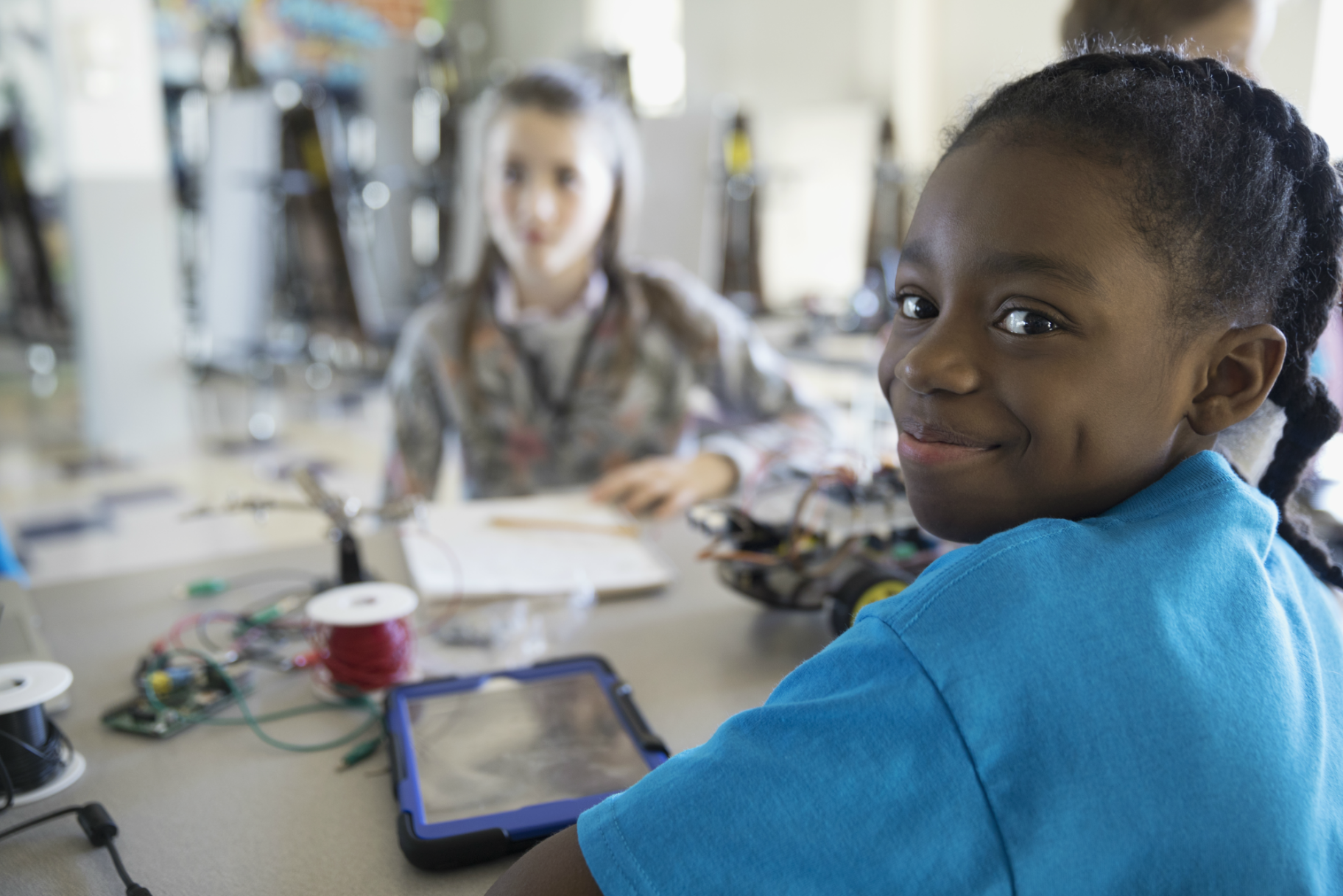Create a free profile to get unlimited access to exclusive videos, breaking news, sweepstakes, and more!
6 Ways Black Kids Are Discriminated Against In Schools
Black students are disciplined more harshly than their white counterparts, starting as early as preschool.

Are public schools failing black students most of all? A new report from the U.S. Government Accountability Office published on April 4 confirmed something we’ve all been thinking about. Black students are punished at a higher rate than students of other races, but unfortunately, this isn’t new information.
Here are 6 disturbing facts about the discrimination black students face in America:
1. Black students are suspended more than their white peers.
The U.S. Government Accountability Office’s latest report found that black students, boys, and students with disabilities in K-12 public schools were overrepresented when looking at discipline rates, primarily suspensions and expulsions during the 2013-2014 school year. Even though black students make up only 15.5% of all public school students — compared to white students, who make up half of public school students — they represent about 39% of students who have been suspended from school.
“These disparities were widespread and persisted regardless of the type of disciplinary action, level of school poverty, or type of public school attended,” the GAO found.
2. Black girls are disciplined more harshly.
According to a 2017 report from the National Women’s Law Center, black female students are 5.5 times more likely to be suspended from school, and 6.1 times more likely to be expelled, than white female students. They are also 2.5 times more likely to be expelled without educational services.
“Black girls face high and disproportionate suspension rates across the country – and it’s not because they are misbehaving more frequently than other girls,” Neena Chaudhry, director of education at the center, said. “This uneven discipline is often the result of deeply ingrained racist and sexist stereotypes that push black girls out of school.”
3. Discrimination against black students starts early.
While black preschoolers make up only 18% of the population, they make up 42% of students who have been suspended, and almost half of preschoolers who have been suspended more than once, according to a 2014 report by the U.S. Department of Education’s Office of Civil Rights. Comparatively, white children make up 43% of the public preschool population, but account for only 26% of students who have been suspended more than once.
4. High schools do not prepare poor black and Latinx children for college.
The U.S. Government Accountability Office also found, in 2016, that public schools with high amounts of poor and Black and Latinx students — schools that were “racially and economically concentrated” — had higher percentages of students who were held back in 9th grade, suspended, or expelled. These same schools offered fewer math, science, and college preparatory courses, further bolstering findings that black students see a gap in the high school experience, and thus, college readiness.
5. Black kids are set up to fail.
In 2013, after collecting data from over 26,000 U.S. middle and high schools, the Civil Rights Project at the University of California, Los Angeles found that suspensions were being overused as disciplinary tactics in American schools, and showed, in particular, “increases in suspension rates by race when compared to data from the 1970s.”
"As we've gotten to this sort of zero-tolerance mentality, that kind of policy has been especially applied to poor kids and especially black kids; and also, kids with disabilities," Daniel Losen, director of the Civil Rights Project, said. Getting suspended, Losen explained, increases a student’s disengagement from school, and increases their likelihood of dropping out altogether. After being suspended just once, the chance a student will drop out doubles from 16% (the dropout rate for students who haven’t been suspended) to 32%. For students who have been suspended twice or more times, the dropout rate skyrockets to 49%.
6. The government isn't about to fix it any time soon.
It’s easy to say slavery and segregation are in the past, and rest on those laurels. In 2014, Obama tried to slow the school-to-prison pipeline by asking schools to put an end to zero-tolerance discipline policies that disproportionately affect black and Hispanic students.
Despite the statistics supporting the Obama administration’s conclusion, the Trump administration has steadily pushed to dismantle policies put in place to protect students from discriminatory disciplinary action, even implying that such policies as an indirect cause of the Parkland shooting.
The president announced last month that Secretary of Education Betsy DeVos will lead a commission to examine the “repeal of the Obama administration’s ‘Rethink School Discipline’ policies,” Fortune reports.
“We are studying that rule. We need to ensure that all students have an opportunity to learn in a safe and nurturing environment. And all students means all students,” DeVos said during the same "60 Minutes" interview where she avoided discussing institutionalized racism, claiming instead that the issue boiled down to “individual kids.” DeVos has notably supported online charter schools even though they're really bad for students, hacked away at Title IX protections, especially for transgender students, and is seeking to destroy student aid. DeVos is also delaying an Obama-era rule that would require states to address racial biases that may be channeling disproportionate numbers of minorities into special education.
Trump’s decision has prompted disappointment (and confusion) among civil rights groups. “Yet again, the Trump administration, faced with a domestic crisis, has responded by creating a commission to study an unrelated issue in order to ultimately advance a discriminatory and partisan goal,” said Sherrilyn Ifill, the president and director-counsel at NAACP Legal Defense and Educational Fund Inc.
(Photo: Portrait smiling pre-adolescent girl assembling robotics in classroom. Via Getty Images)














